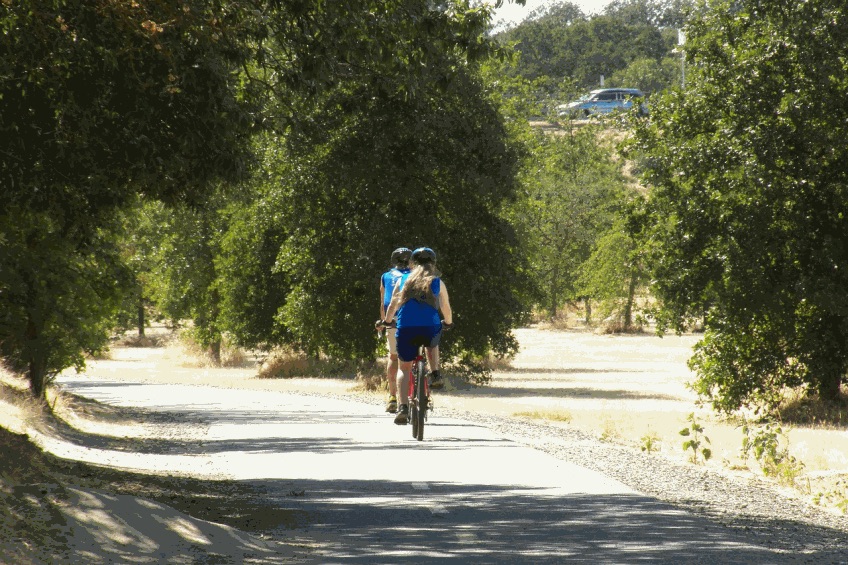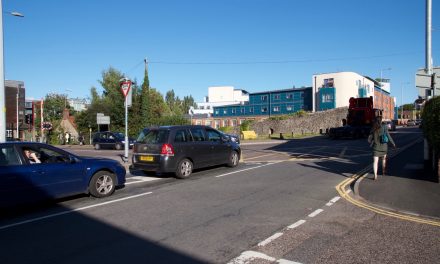Do we really need the proof that better cycling infrastructure makes cycling safer? Given the attacks on cycling by some right wing tabloid papers (I can’t bring myself to use the word “newspaper”) and groups “defending” the right for taxis and other vehicles to dominate the road, it probably doesn’t hurt to have yet more evidence.
The American Journal of Public Health has just published a report (Dec 2016 issue, Vol 106 No 12, pp 2089-91) by John Pucher PhD of Rutgers University and Ralph Buehler PhD of Virginia Tech that shows some fascinating data on the level of expansion of some US cities’ cycling infrastructure and the growth in bike trips as well as the number of crashes per 100,000 trips and the reduction in both fatalities and serious injuries.
While accepting that a modest increase on minimal levels of cycling infrastructure can be shown as major levels of growth when expressed in percentage terms – and we don’t have the details as to the levels of bike network prior to these “expansions”, the 10 cities in the study saw an expansion of their bike networks between 2000 and 2015 by a minimum of 17% (Philadelphia, but for 2008-2015), a median of 121% and a maximum of 381% (New York).
The authors note that “Bikeways” (included in the statistics for the table) comprise on-road bike lanes (including buffered bike lanes and cycle tracks), off-road bike paths, paved multiuse trails such as greenways, and bike boulevards and neighbourhood greenways. All 10 of these cities increasingly have been building cycle tracks, buffered bike lanes, and off-road greenways, which provide physical separation from motor vehicles and thus greater safety.
Census data on the number of bike commuters provided the basis for calculating the remarkable level of change in bike trips in these cities, combined with the most recent National Household Travel Survey, which showed that approximately one in five bike trips were work related. Philiadelphia had the lowest growth rate of 51%, correlating with their lowest level of cycling network growth of 17%. Portland saw the highest level of growth in cycling trips at 391%, but this is probably explained by the high level of network existing in the city. The median level of cycling trip growth was an impressive 167%.
Instead of measuring just the number of crashes involving cyclists, which would have given a confusing picture with the high levels of increased cycling, the authors calculated the change in crashes per 100,000 bike trips, as well as the change in fatalities and serious injuries, also per 100,000 bike trips. Crashes involving cyclists declined on average by 54% resulting in 56.5% fewer fatalities and serious injuries.
You have to believe that Federal lawmakers in Washington DC would be impressed with their city’s results: 101% cycle network growth resulted in 384% growth in cycling trips, with almost half the number crashes (46%) and exactly half (50%) fewer fatalities and serious injuries.
The authors comment that it is crucial to improve cycling safety in the USA given that “The Centers for Disease Control and Prevention’s injury statistics Web site (WISQARS) reports that in 2014, there were 902 cyclist fatalities and 35 206 serious cyclist injuries (requiring hospitalization). The United States has much higher fatality and serious injury rates per kilometer cycled than comparable high-income countries. Controlling for exposure levels, cyclist fatalities in 2010 per 100 million kilometers cycled were 4.7 in the United States versus 1.0 in the Netherlands, 1.1 in Denmark, and 1.3 in Germany. Serious injury rates in 2010 were also much higher in the United States: 207 serious injuries per 100 million kilometers cycled versus 44 in Germany.”
UK figures show 30.9 cycling fatalities per billion miles cycled, which converts to 1.92 per 100 million km, putting us at about 40% of the US level, but almost twice the Dutch.
It is good to see that the report’s authors also state that “Traffic safety experts now use the term “crashes” instead of “accidents” to emphasize that the design of the transportation system contributes to most traffic fatalities and injuries.”

The crucial importance of physical separation of cycling facilities
It is not simply a matter of expanding bicycle infrastructure, however. The specific type of bicycle infrastructure matters. Several studies show the crucial importance of physical separation of cycling facilities from motor vehicle traffic on heavily travelled roads. A study of different kinds of cycling facilities in Vancouver and Toronto, Canada, found that the safest kind of facility, by far, were cycle tracks, on-street bicycle lanes that are physically separated from motor vehicles by raised curbs, bollards, or concrete barriers. Compared with major streets with parked cars and no bicycle facilities, cycle tracks on roads without parked cars were 89% safer; regular, unprotected bicycle lanes on major roads without parked cars were 53% safer; and lightly trafficked residential streets without any bicycle facilities were 56% safer. Thus, removing car parking and replacing it with cycle tracks is an ideal way to improve cycling safety on major streets. Traffic calming—discouraging through traffic and reducing speed limits—is key to improving safety on local neighbourhood streets. Similarly, a study of cycle tracks in Montreal, Canada—with the most extensive system of cycle tracks in North America—found that cycle tracks had an injury rate 28% lower than that on parallel roads without bicycle facilities and attracted 2.5 times more bicycle trips than did roads without cycle tracks.
In a comment on the report, US website Citylab.com draws some conclusions about “vehicular driving” – what we would call “taking the lane”, and they describe as cycling “assertively rather than cower at the side of the road”. Having observed that US traffic deaths are on the rise with more than a 10% increase in the first half of 2016, they put the blame on motorists fiddling with their smartphones. Report author Pucher takes a strong stance: “Vehicular cycling doesn’t work: where there aren’t bike facilities, there are more accidents and more injuries. There’s all sorts of weird cultural factors behind the defence of vehicular cycling, but all the evidence shows that separate facilities are much safer. In particular, you’re much less likely to get killed, because most crashes don’t involve motor vehicles.”
This article by Richard Atkins appeared first on Spycycle website here: https://spycycle.uk/index.php






Recent Comments